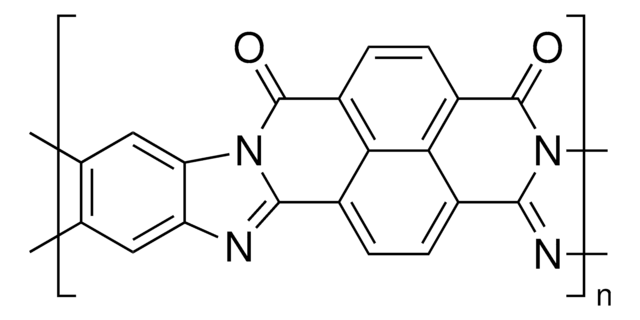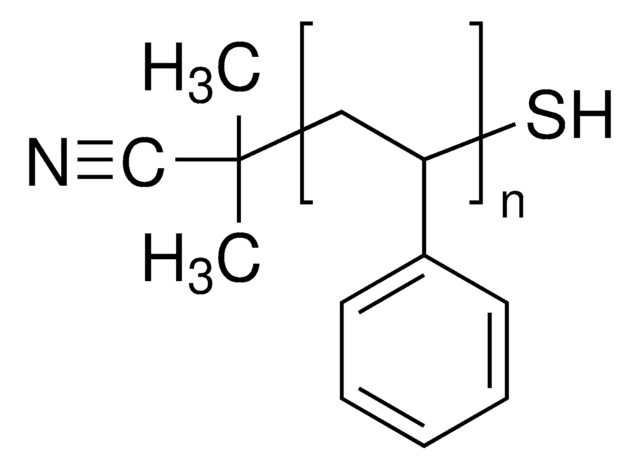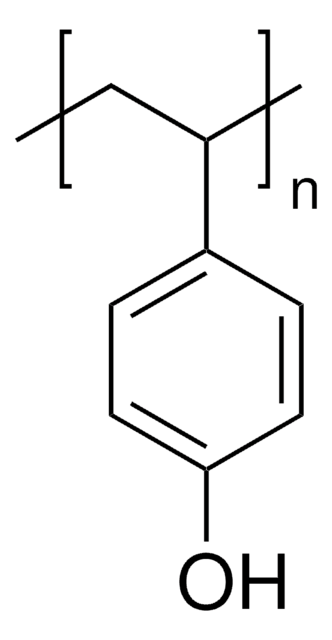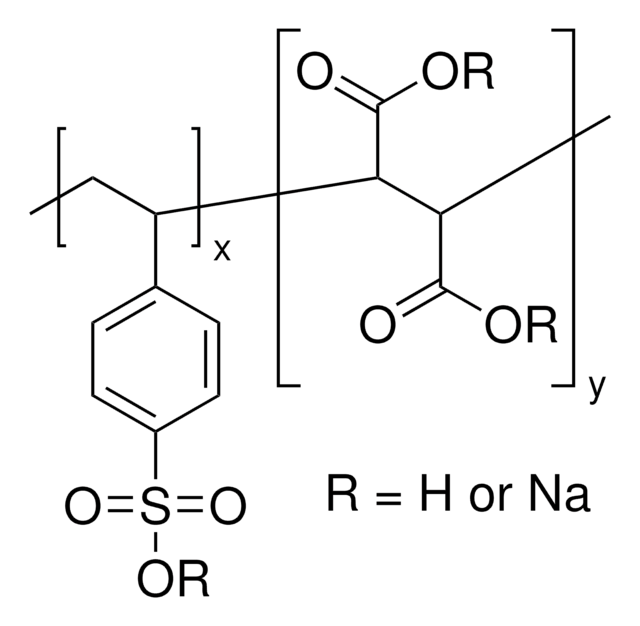746983
Poly(styrene)-block-poly(acrylic acid)
average Mn 38,000, 20 wt. % PAA, PDI ≤1.3
About This Item
Produits recommandés
Forme
powder
Poids mol.
Mn 27,000-33,000 (polystyrene)
Mn 34,000-42,000 (total)
Mn 7,000-9,000 (poly(acrylic acid))
average Mn 38,000
PDI
≤1.3
Vous recherchez des produits similaires ? Visite Guide de comparaison des produits
Application
Informations légales
Sold for research purposes only. Not for use in humans. Before opening or using this product, please read the following terms and conditions. Use of this product shall constitute acknowledgement and acceptance of these terms and conditions.
Use of this product may be covered by one or more of the following US patents and corresponding claims outside the US: 7,714,075; 7,250,479; 7,666,962; 6,642,318; 6,747,111, and pending applications (W2010/8356). For details contact Aldrich Chemical Company, Inc.
Mention d'avertissement
Warning
Mentions de danger
Conseils de prudence
Classification des risques
Eye Irrit. 2 - Skin Irrit. 2 - STOT SE 3
Organes cibles
Respiratory system
Code de la classe de stockage
11 - Combustible Solids
Classe de danger pour l'eau (WGK)
WGK 3
Point d'éclair (°F)
Not applicable
Point d'éclair (°C)
Not applicable
Faites votre choix parmi les versions les plus récentes :
Certificats d'analyse (COA)
Vous ne trouvez pas la bonne version ?
Si vous avez besoin d'une version particulière, vous pouvez rechercher un certificat spécifique par le numéro de lot.
Déjà en possession de ce produit ?
Retrouvez la documentation relative aux produits que vous avez récemment achetés dans la Bibliothèque de documents.
Articles
Reversible addition–fragmentation chain transfer (RAFT) polymerization is rapidly moving to the forefront in construction of drug and gene delivery vehicles.
The development of drugs that target specific locations within the human body remains one of the greatest challenges in biomedicine today.
Over the past two decades, the rapid advance of controlled living polymerization (CLP) techniques.
Wide range of functional polymers for biomedical applications have been synthesized and structurally characterized. Several classes of polymers including biodegradable polymers, hydrophilic & amphiphilic polymers, and stimuli responsive polymers have been prepared using controlled and directed functionalization via "living" polymerization such as RAFT, ionic and ring opening polymerization. Selected polymers have been studied for their structure-properties relationship. "
Notre équipe de scientifiques dispose d'une expérience dans tous les secteurs de la recherche, notamment en sciences de la vie, science des matériaux, synthèse chimique, chromatographie, analyse et dans de nombreux autres domaines..
Contacter notre Service technique









